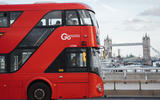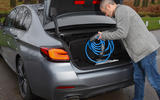Setting out to design something that will become ‘iconic’ is an extremely risky proposition. The status of ‘icon’ used to take decades to earn or was instantly applied to a new product that had received near-universal acclaim.
For the latter, think of the Audi TT, the original Mini or the iPhone. For the former, think of the Big Ben clock tower or the classic red telephone box.
Indeed, the development of this telephone box was a hard-fought battle after London’s boroughs had refused to accommodate the Post Office’s concrete art deco K1 design. The 1924 competition to design a more acceptable box included the Royal Fine Art Commission, the Royal Academy and the Royal Institute of British Architects.
The final design was executed by architect Sir George Gilbert Scott. He suggested making the box out of steel and painting it silver. It went into production made of cast iron and painted red.

You can’t really write a design brief demanding an ‘iconic’ outcome – but that’s what the UK government has set out to do with the roadside EV charger. “Electric vehicle charge points set to become next great British emblem. Iconic British electric vehicle charge point could be seen on streets across the country from 2022,” declared the press release. “Electric vehicle charge points across the UK could become as recognisable as the red postbox or black cab, following the appointment of the Royal College of Art and PA Consulting to deliver an iconic British charge point design, transport secretary Grant Shapps has announced.”
Of course, prime minister Boris Johnson has form here. During his time as London mayor, he started a competition to replace the ‘iconic’ London black cab (a competition won by Geely- owned London Taxi International, now LEVC, with its range-extender model) and, back in 2007, Autocar helped realise his dream of reinventing the ‘iconic’ Routemaster bus before he was elected mayor. I worked with Capoco, one of the world’s leading bus designers, to develop an engineering concept that revived the open rear deck (using a range-extender drivetrain was the key) and presented the idea to him in his campaign office.
























Join the debate
Add your comment
Yay! Just what the world needs, more car related yet pfootpath based stuff getting in the way of pedestrians.
As much as I like it London didn't NEED a new Routemaster bus, especially one with shortcomings and a raison d'etre which hinged very much on maintained personnel resourcing (hint: the back door is rarely used), and the streets of the UK do not NEED more superfluous stuff.
Use the existing infrastructure. Lamposts. They are, for the most part, plentiful, already a part of a network and can be modified in ways that benefit all road users (why do street lights overwhelmingly illuminate roads - cars have headlights, people don't). It's an opportunity to design and roll out something that has benefits that go beyond a single function and so avoids resulting in just another roadside box, adding to clutter. They can be used for information or, pertinently, help points, device charging, all round illumination, promotions, and seasonal decorations. There's your iconic design.
How one makes payment - even in bad weather - is only an issue if you are thinking about how we do these things now. In 3, 5, or, 10 years hardly any payments will require the presence of an actual card or insertion of a PIN. The car, being adjacent to the charging point, and a charge cycle engaged, will be the way payment is initiated.
Sooner or later wireless charging will become widespread and that in time will roll out in a way that will make roadside charging boxes redundant, iconic or not. But at least the lamposts will still live for another day.
The priority should be to draw a thick line under the words 'plug in', and get rid of the manual process completely, before too much money has been wasted building ugly pavement ornaments.
I propose the charger form factor be either a replacement kerbstone for roadside charging, or a rear kerb in parking bays. Coloured tarmac outlines the space and a coloured LED buried like a cats eye in front of the space shows availability or status
Connection terminals should be hidden away under the car, near a wheel. The car should use its parking sensors to either automatically position the car in the correct place, or aid the driver in doing this manually.
Once the car is in position, an automated docking procedure should initiate the connection to raise from out of a kerb and connect to the car and payment made through the android auto or carplay system.